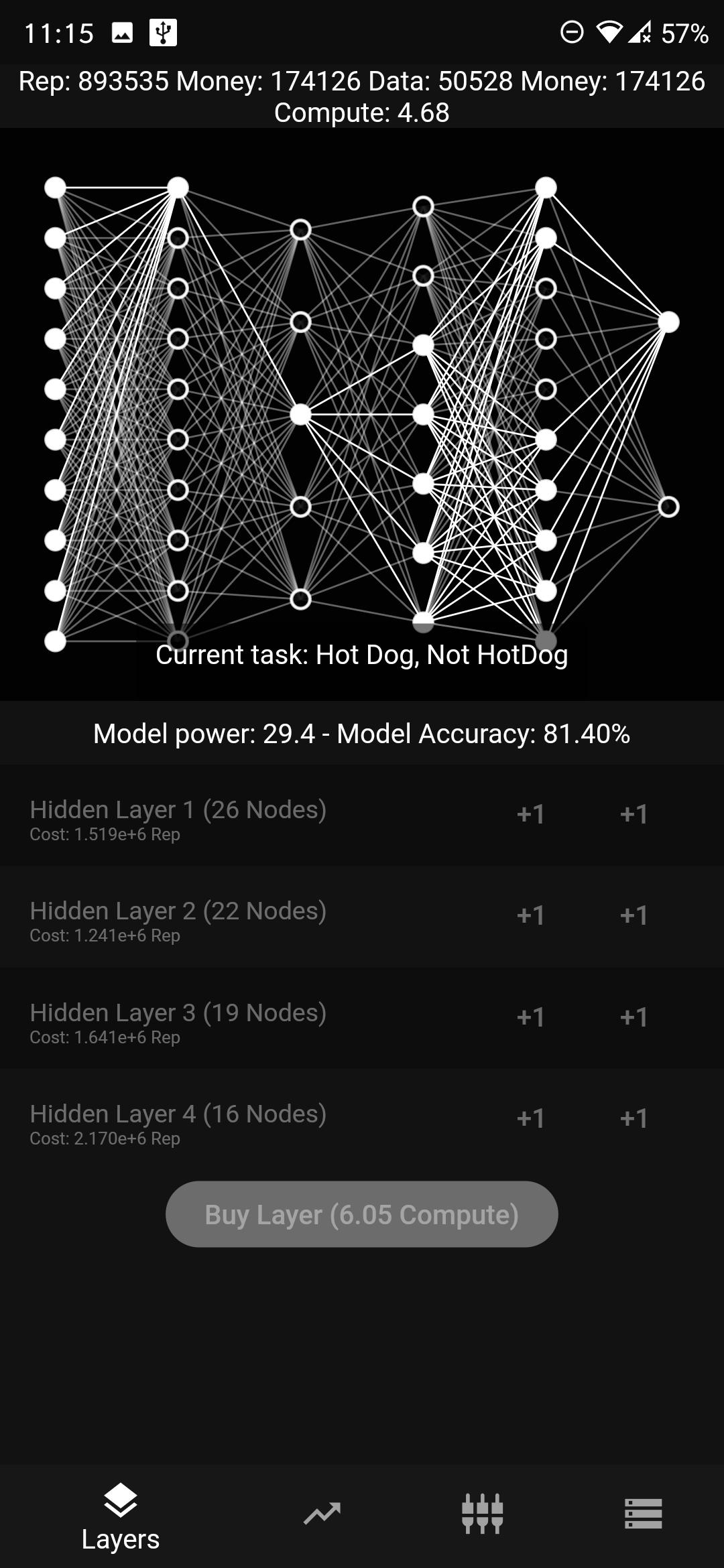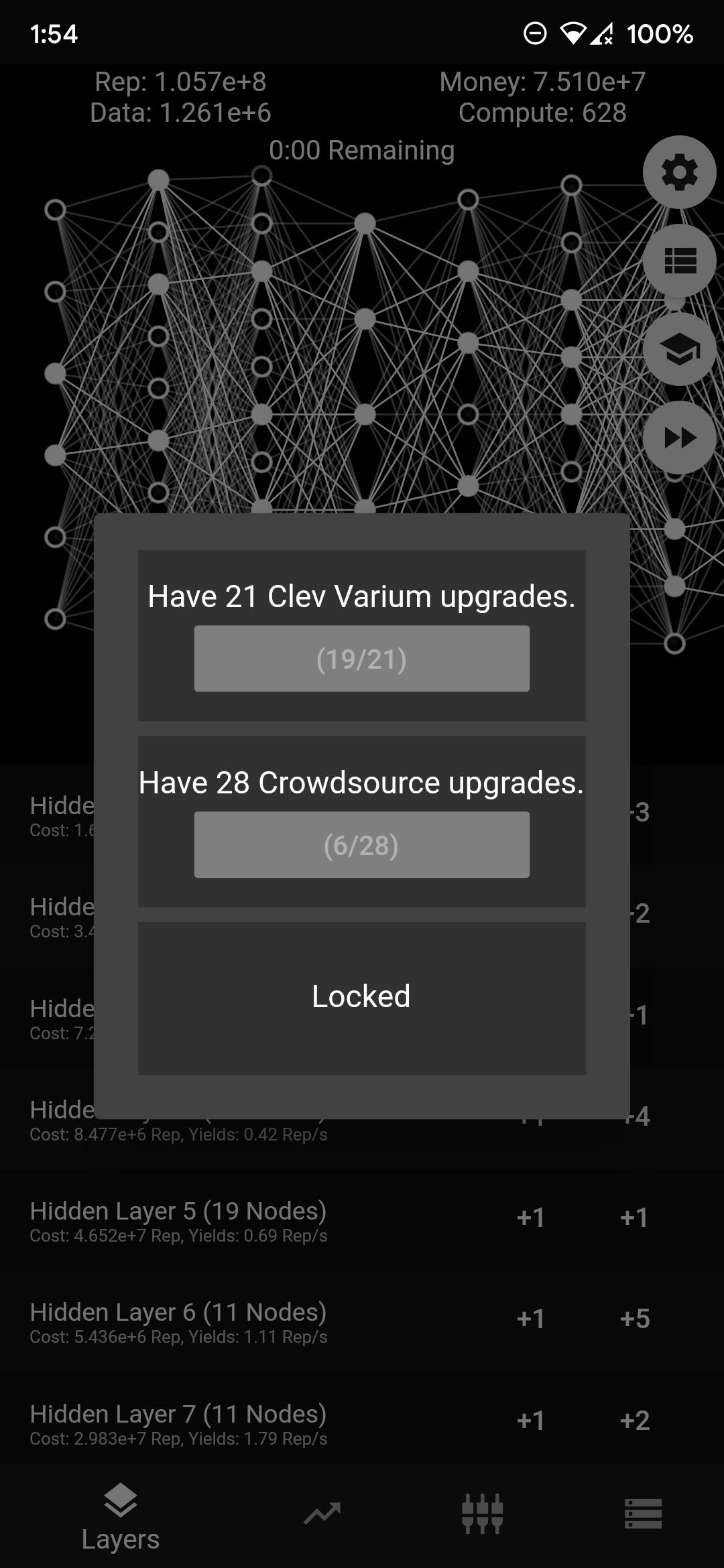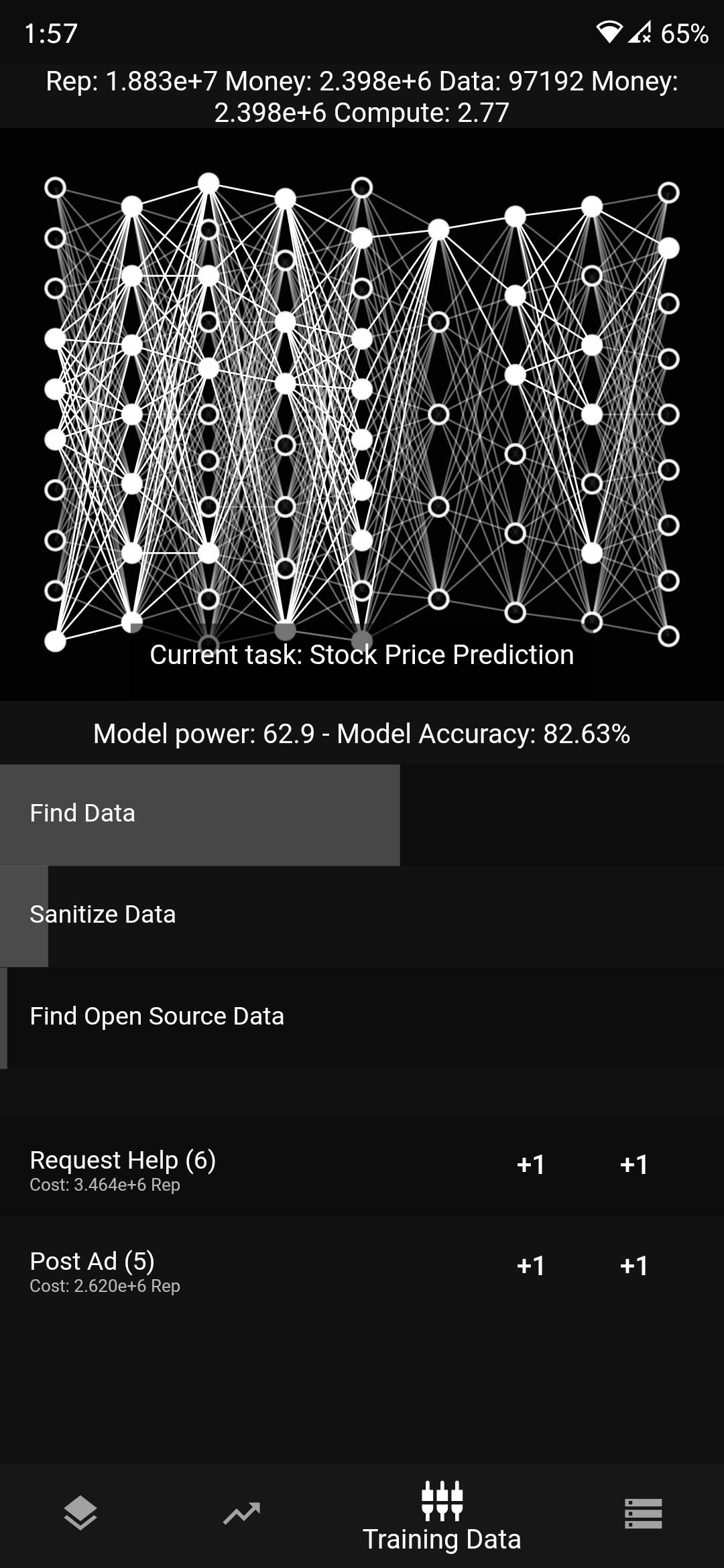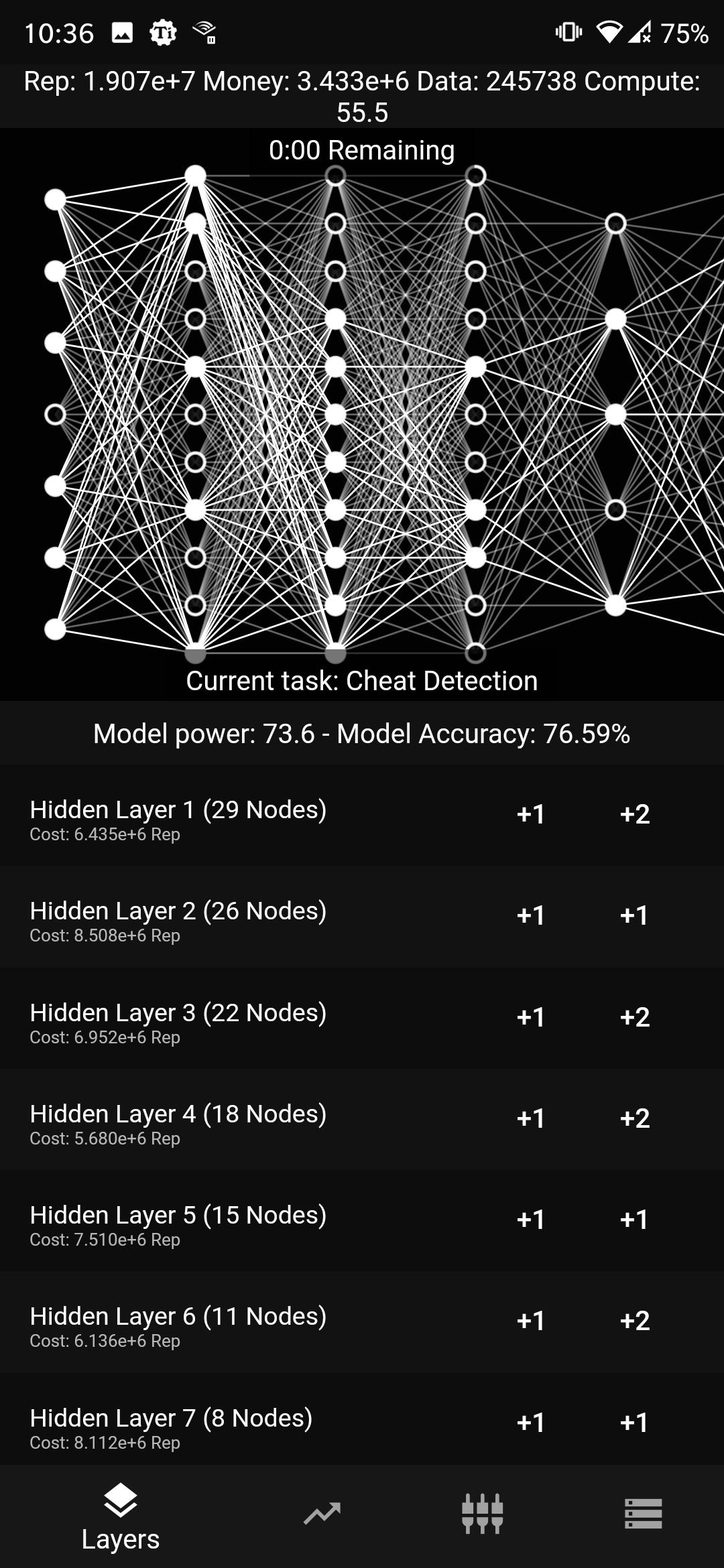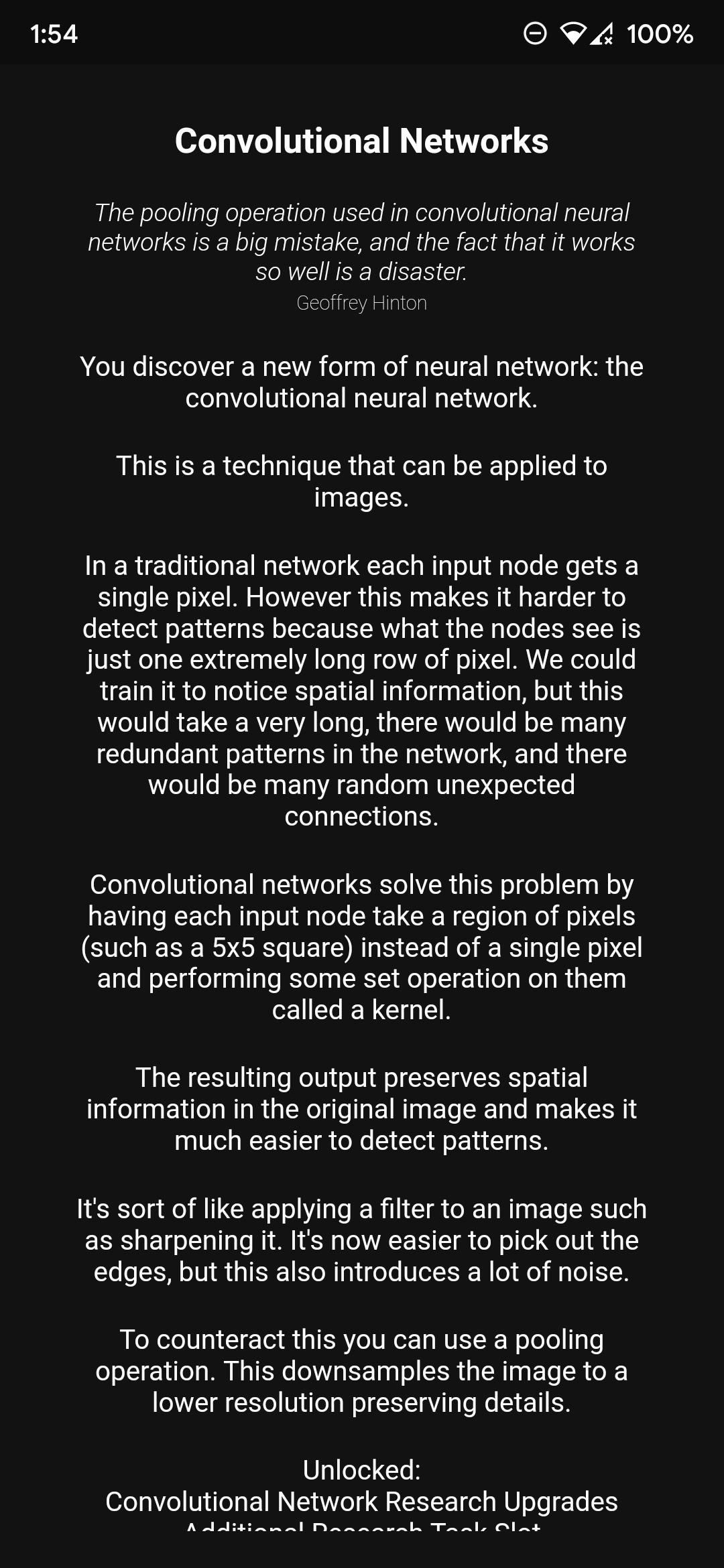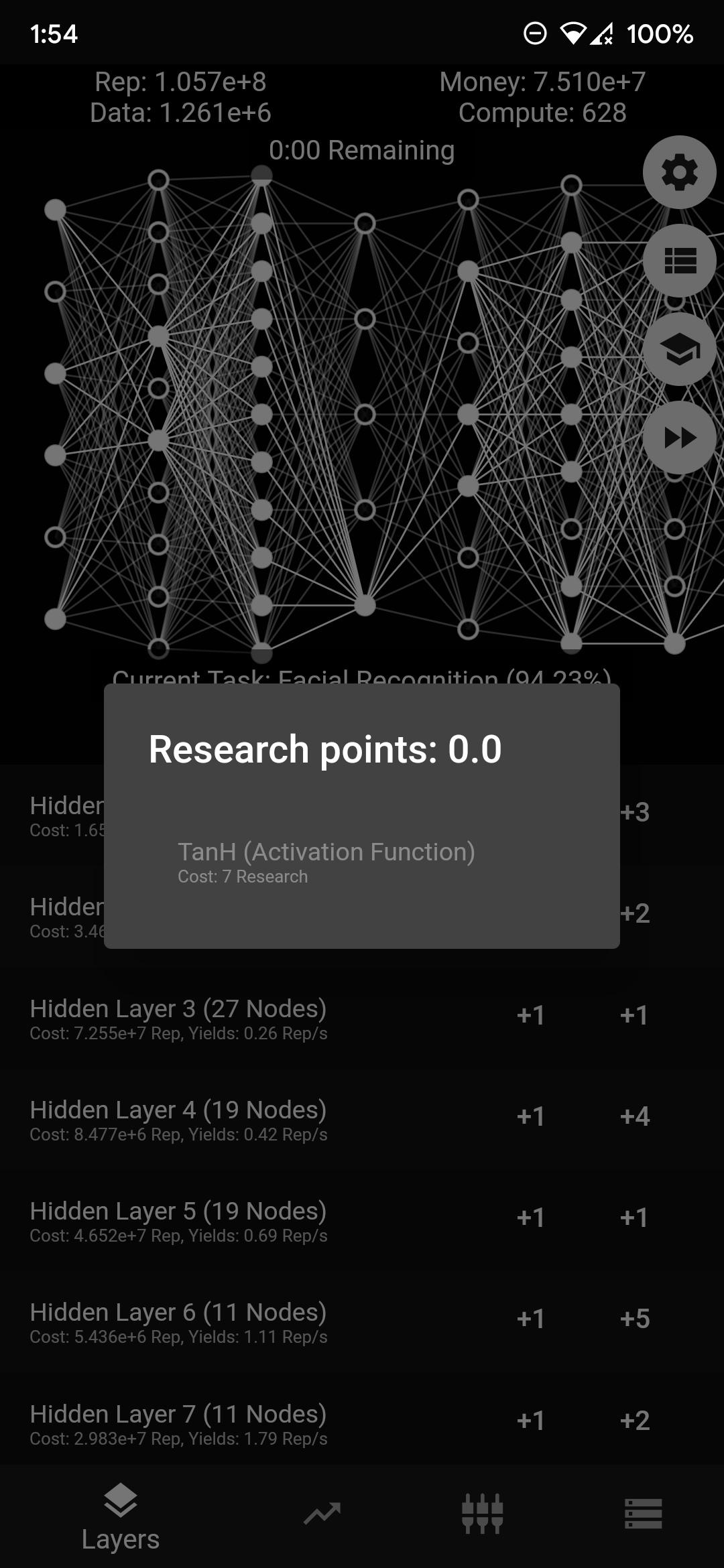An Incremental Idle Game Based On Building A Neural Network
Perceptron is a new incremental game which is based around the idea of building and training a neural network. The concepts behind a neural network have been distilled to their essence in this idle simulation.
Not to say the game is simple. Sure, it starts simple with only nodes, training, and data, but soon balloons into a complex idle game with prestige and upgrades. Not to mention offline support.
Take on the role of a young undergraduate student as you become quite the idle tycoon. Soon you'll be rivaling even GPT-3.
Perceptron is not just another idle clicker. It was designed around the idea of training a neural network and has taken inspiration from many neural network topics. Who knows, you might even end up learning something.
Perceptron: A Cornerstone in Machine LearningPerceptron, a seminal work in the field of machine learning, emerged in the 1950s as a groundbreaking concept for creating artificial neural networks. Developed by Frank Rosenblatt, it laid the foundation for modern-day deep learning algorithms.
The Concept of Perceptron
A perceptron is a simple artificial neuron that can classify binary inputs into two distinct categories. It consists of a weighted sum of inputs and a threshold function. Each input is multiplied by its respective weight, and the sum is compared to the threshold. If the sum exceeds the threshold, the perceptron outputs a value of 1, indicating membership in one category; otherwise, it outputs a value of 0, indicating membership in the other category.
Perceptron Learning Algorithm
The perceptron learning algorithm iteratively adjusts the weights of the inputs to minimize the error in classification. It compares the perceptron's output to the desired output and updates the weights accordingly. The algorithm continues until the perceptron can correctly classify all the training data.
Limitations of Perceptron
While perceptrons have the ability to solve linearly separable problems, they encounter limitations when dealing with nonlinearly separable problems. This means that they cannot classify data that cannot be divided into two categories by a straight line.
Significance and Impact
Despite its limitations, the perceptron played a pivotal role in the development of artificial neural networks. It demonstrated the feasibility of creating artificial systems that could learn from data and perform classification tasks. The concept of perceptrons inspired further research and advancements in the field of machine learning.
Applications
Perceptrons have found applications in various domains, including:
* Image recognition
* Natural language processing
* Speech recognition
* Financial forecasting
* Medical diagnosis
Conclusion
The perceptron remains a fundamental building block in the field of artificial intelligence. Its simplicity and effectiveness have made it a valuable tool for solving classification problems. While it has limitations, the perceptron's legacy lies in its role as a pioneer in the development of deep learning algorithms that power today's advanced AI systems.
An Incremental Idle Game Based On Building A Neural Network
Perceptron is a new incremental game which is based around the idea of building and training a neural network. The concepts behind a neural network have been distilled to their essence in this idle simulation.
Not to say the game is simple. Sure, it starts simple with only nodes, training, and data, but soon balloons into a complex idle game with prestige and upgrades. Not to mention offline support.
Take on the role of a young undergraduate student as you become quite the idle tycoon. Soon you'll be rivaling even GPT-3.
Perceptron is not just another idle clicker. It was designed around the idea of training a neural network and has taken inspiration from many neural network topics. Who knows, you might even end up learning something.
Perceptron: A Cornerstone in Machine LearningPerceptron, a seminal work in the field of machine learning, emerged in the 1950s as a groundbreaking concept for creating artificial neural networks. Developed by Frank Rosenblatt, it laid the foundation for modern-day deep learning algorithms.
The Concept of Perceptron
A perceptron is a simple artificial neuron that can classify binary inputs into two distinct categories. It consists of a weighted sum of inputs and a threshold function. Each input is multiplied by its respective weight, and the sum is compared to the threshold. If the sum exceeds the threshold, the perceptron outputs a value of 1, indicating membership in one category; otherwise, it outputs a value of 0, indicating membership in the other category.
Perceptron Learning Algorithm
The perceptron learning algorithm iteratively adjusts the weights of the inputs to minimize the error in classification. It compares the perceptron's output to the desired output and updates the weights accordingly. The algorithm continues until the perceptron can correctly classify all the training data.
Limitations of Perceptron
While perceptrons have the ability to solve linearly separable problems, they encounter limitations when dealing with nonlinearly separable problems. This means that they cannot classify data that cannot be divided into two categories by a straight line.
Significance and Impact
Despite its limitations, the perceptron played a pivotal role in the development of artificial neural networks. It demonstrated the feasibility of creating artificial systems that could learn from data and perform classification tasks. The concept of perceptrons inspired further research and advancements in the field of machine learning.
Applications
Perceptrons have found applications in various domains, including:
* Image recognition
* Natural language processing
* Speech recognition
* Financial forecasting
* Medical diagnosis
Conclusion
The perceptron remains a fundamental building block in the field of artificial intelligence. Its simplicity and effectiveness have made it a valuable tool for solving classification problems. While it has limitations, the perceptron's legacy lies in its role as a pioneer in the development of deep learning algorithms that power today's advanced AI systems.



